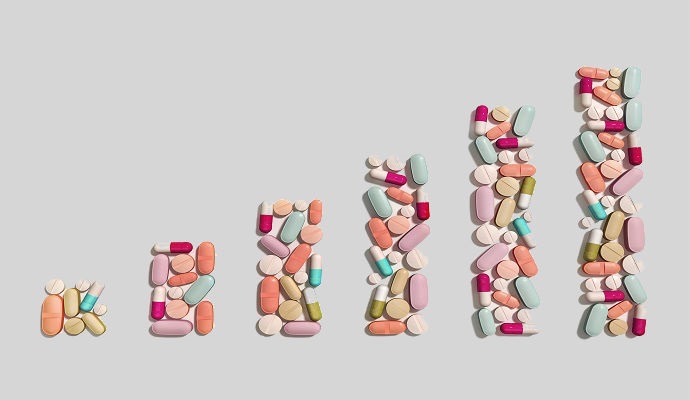Prescription Drug Shortages a $359M Labor Problem for Hospitals
Hospital and health system pharmacies allocated over 8.6 million hours of additional labor to manage prescription drug shortages, a new survey shows.

Source: Getty Images
- Hospital and health system pharmacies are dedicating significant time and money to finding ways to work around prescription drug shortages and acquire access to medications now and in the future, according to a new survey conducted by Vizient.
In fact, the group purchasing organization’s analysis of more than 6,000 hospitals found that, on average, hospitals and health systems allocate over 8.6 million hours of additional labor hours to manage drug shortages each year.
The financial impact of the additional labor spend translates to $359 million annually.
“We know that, looking just at additional labor costs, the impact to U.S. hospitals annually is at least $360 million,” Dan Kistner, senior vice president of pharmacy solutions for Vizient, stated in a press release. “When you also add the cost of more expensive alternative therapies, direct purchases outside the hospital’s traditional channels, medication errors and cancelled or delayed medical procedures, we believe the actual cost of drug shortages to hospitals is significantly higher.”
Prescription drug shortages are a major issue for hospital and health system pharmacies. All of the 365 survey respondents reported experiencing a shortage, and almost two-thirds said they faced at least 20 shortages in the six-month period from July to December 2018.
Research has proven time and time again that patient care suffers when providers are forced to purchase unfamiliar and oftentimes more expensive alternative medications or have no advance knowledge regarding a prescription drug shortage.
Even Vizient’s survey revealed that 38 percent of respondents thought one or more medication errors made in the six-month period was directly related to a drug shortage. Respondents also said prescription drug shortages delay procedures and care delivery across departments, even leading to cancellations of outpatient infusions.
But prescription drug shortages also significantly impacted the bottom line, the survey uncovered.
Direct and indirect costs related to prescription drug shortages are high, respondents reported. The costs include:
- Increases in drug budget
- Lost revenue from cancelled infusions and procedures
- Greater numbers of full-time pharmacy and technician staff
- Reallocation of pharmacy resources, which results in lost productivity
- Documented medication errors, which potentially leads to patient harm
Respondents emphasized the impact on staffing. They said, on average, buyers, pharmacists, and technicians spend the most time managing drug shortages, dedicating more than a day’s work each week to handling shortages.
Additionally, 46 percent of respondents said their hospital has redistributed workload in the face of prescription drug shortages, and another 44 percent granted staff overtime. Ten percent said they hired more staff.
Hospital and health system pharmacy staff are spending most of their time finding workarounds.
Staff employ multiple strategies to manage shortages, starting with looking at past prescribing data and utilization trends to inform decisions on order restrictions and usage criteria, the survey stated. Other helpful strategies identified by respondents included forming one or more task forces or committees to address drug shortages, purchasing alternative presentations, increasing stock of medications that leaders expect to be limited in supply, and restricting use of short drug to approved indications.
Vizient also highlighted the role critical drug lists and outside resources have in managing prescription drug shortages.
Thirty-five percent of respondents reported identifying and maintaining a list of drugs critical to patient care. Of those respondents, more than two-thirds said they dedicate daily or weekly resources to managing the critical drug list.
Outside resources that helped hospitals and health systems manage prescription drug shortages included wholesalers, the American Society of Health-System Pharmacists (ASHP), manufacturers, and the FDA. Vizient also pointed out that group purchasing organizations have resources on managing drug shortages.
Hospitals and health systems have a wide range of internal and external resources to deal with prescription drug shortages. But a group of providers recently took the issue into their own hands.
In late 2018, Catholic Health Initiatives, HCA Healthcare, Intermountain Healthcare, Mayo Clinic, Providence St. Joseph Health, SSM Health, and Trinity Health founded their own non-profit generic drug company called Civica Rx to combat drug shortages.
“It’s an ambitious plan,” Intermountain Healthcare’s President and CEO Marc Harrison, MD, stated at the time. “But healthcare systems are in the best position to fix the problems in the generic drug market. We witness, on a daily basis, how shortages of essential generic medications or egregious cost increases for those same drugs affect our patients. We are confident we can improve the situation for our patients by bringing much needed competition to the generic drug market.”
Civica Rx recently announced its first product agreement with Xellia Pharmaceuticals in Denmark. The partnership aims to address antibiotic shortages.
